site search
online catalog
IMPRESSIVE 3rd NEW JERSEY - 1st U.S. HUSSARS - PRESENTATION CAVALRY OFFICER’S SWORD WITH SWORD KNOT, DEEPLY CAST AND CHASED HILT AND MOUNTS AND IMMACULATE BLADE ETCHING

Hover to zoom


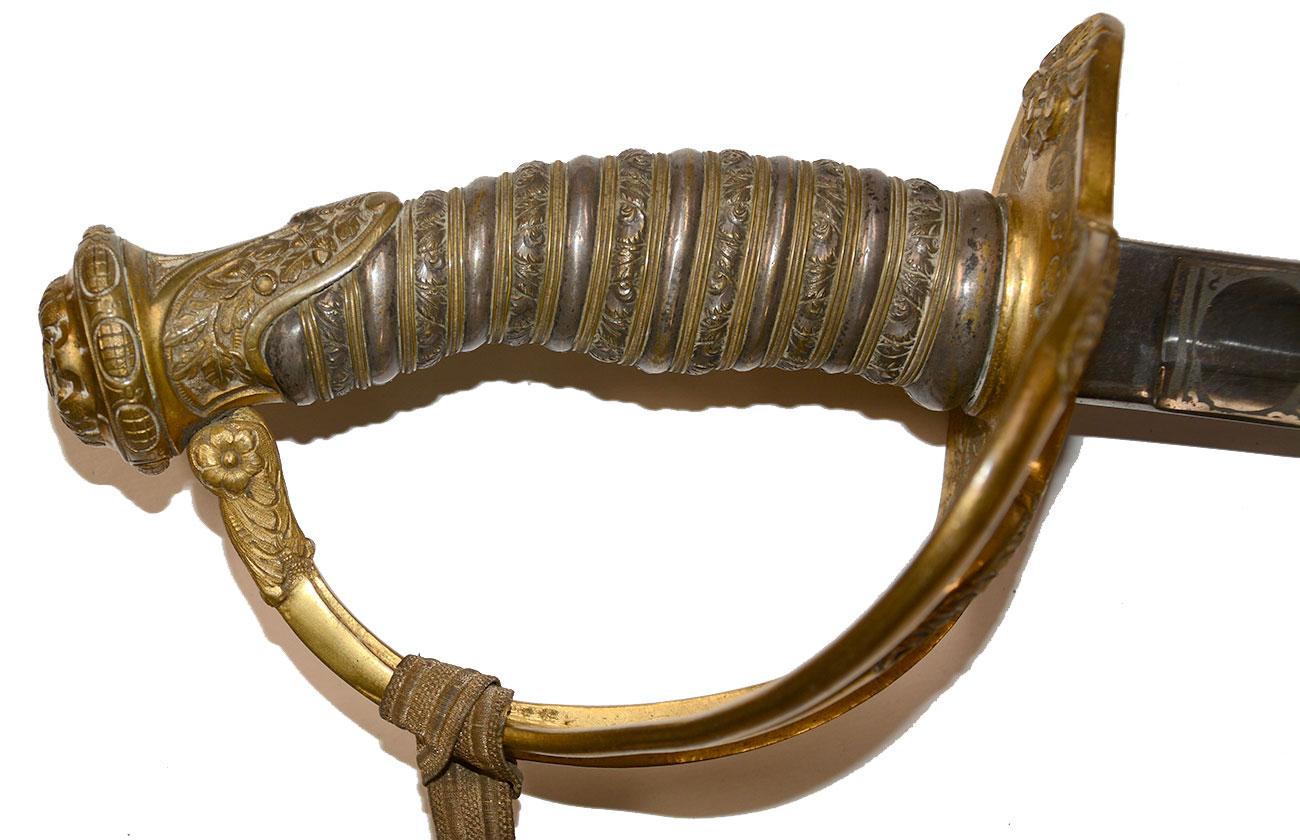
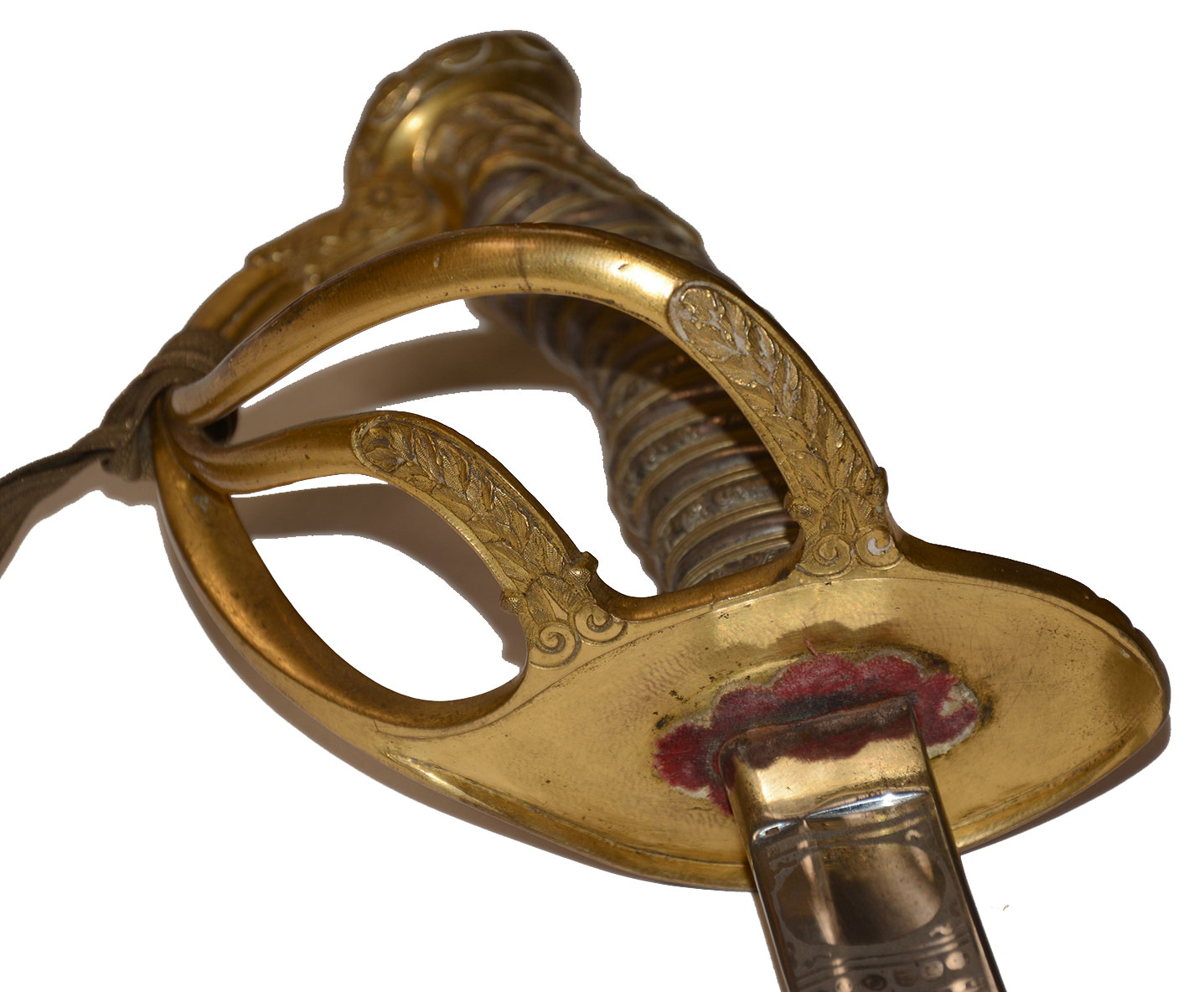
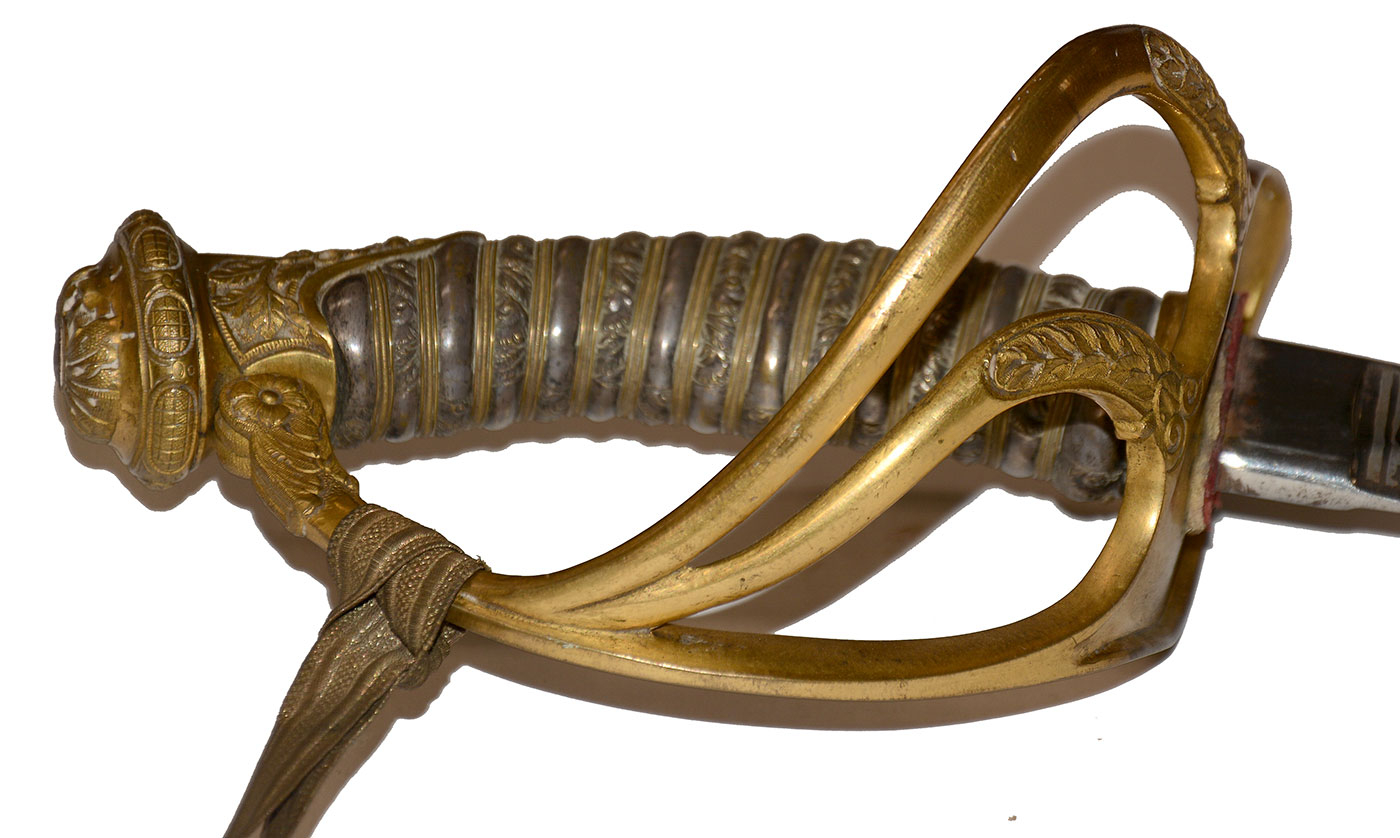

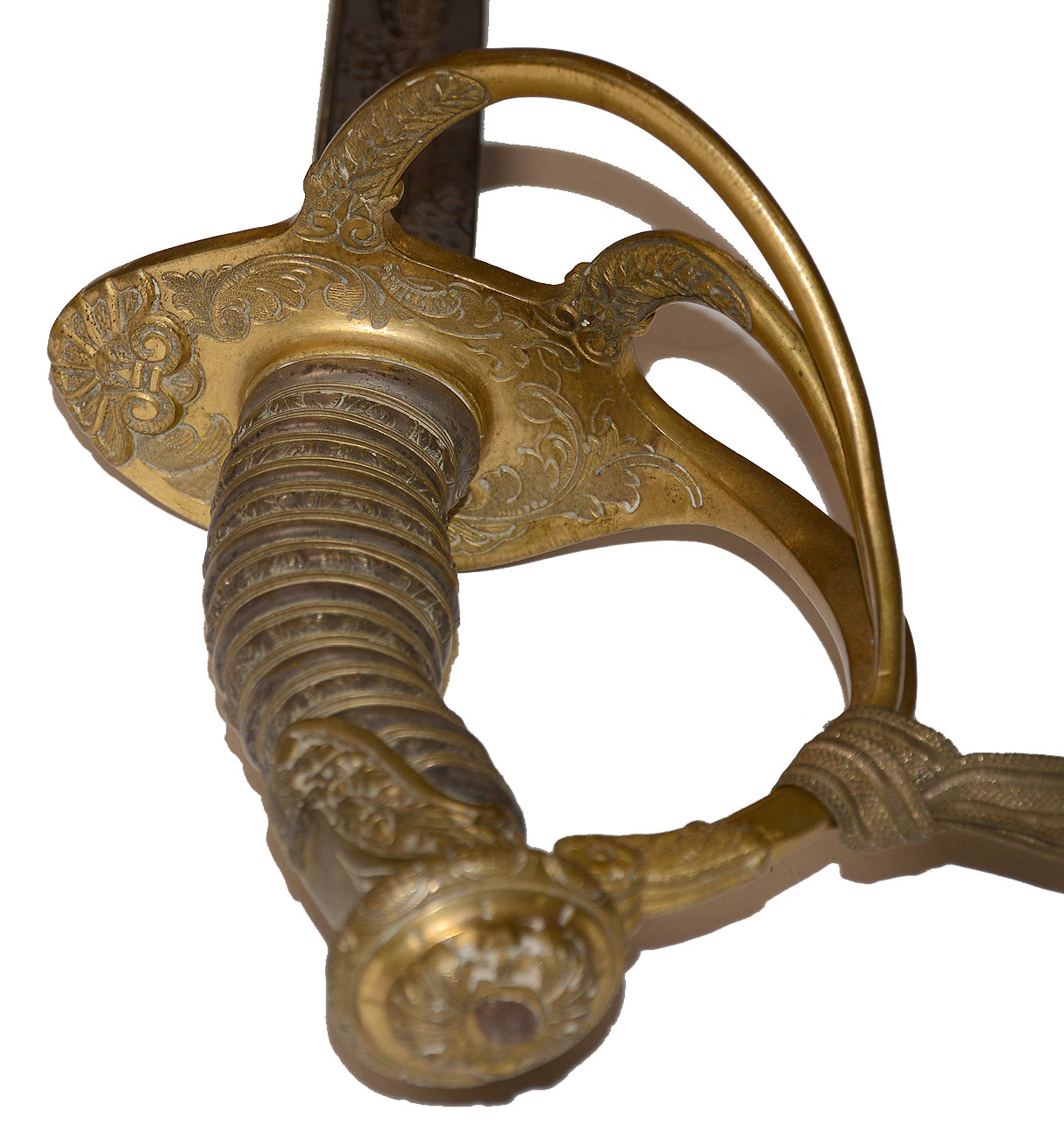
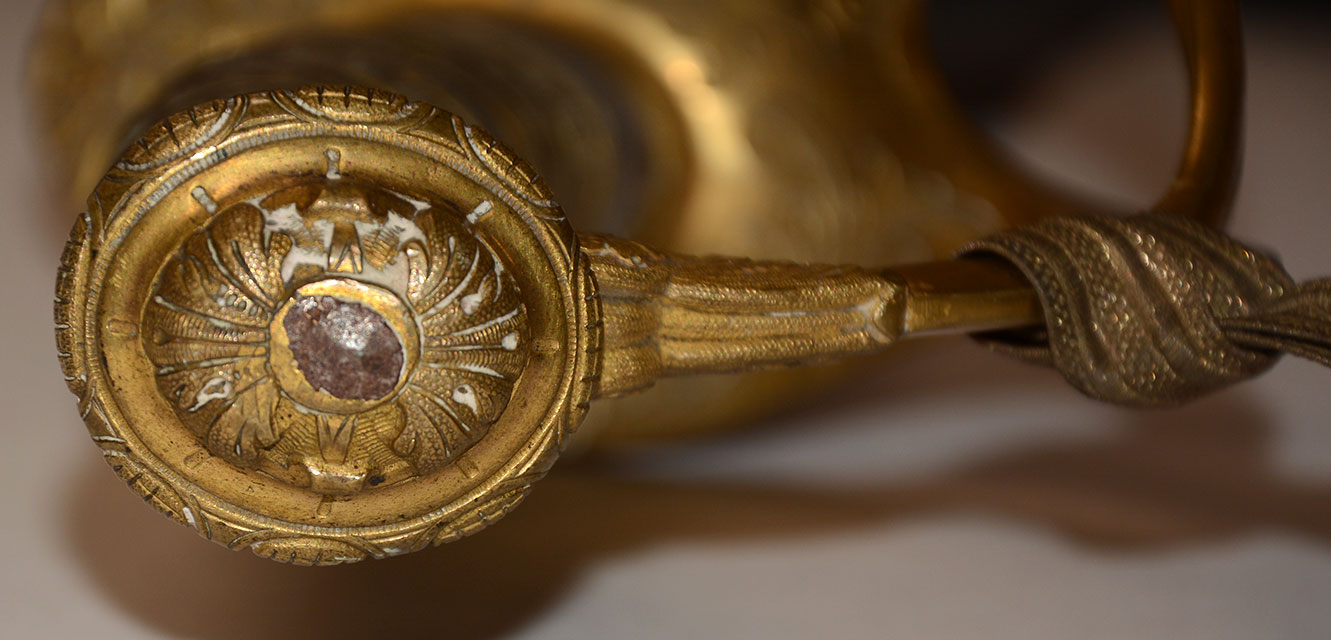
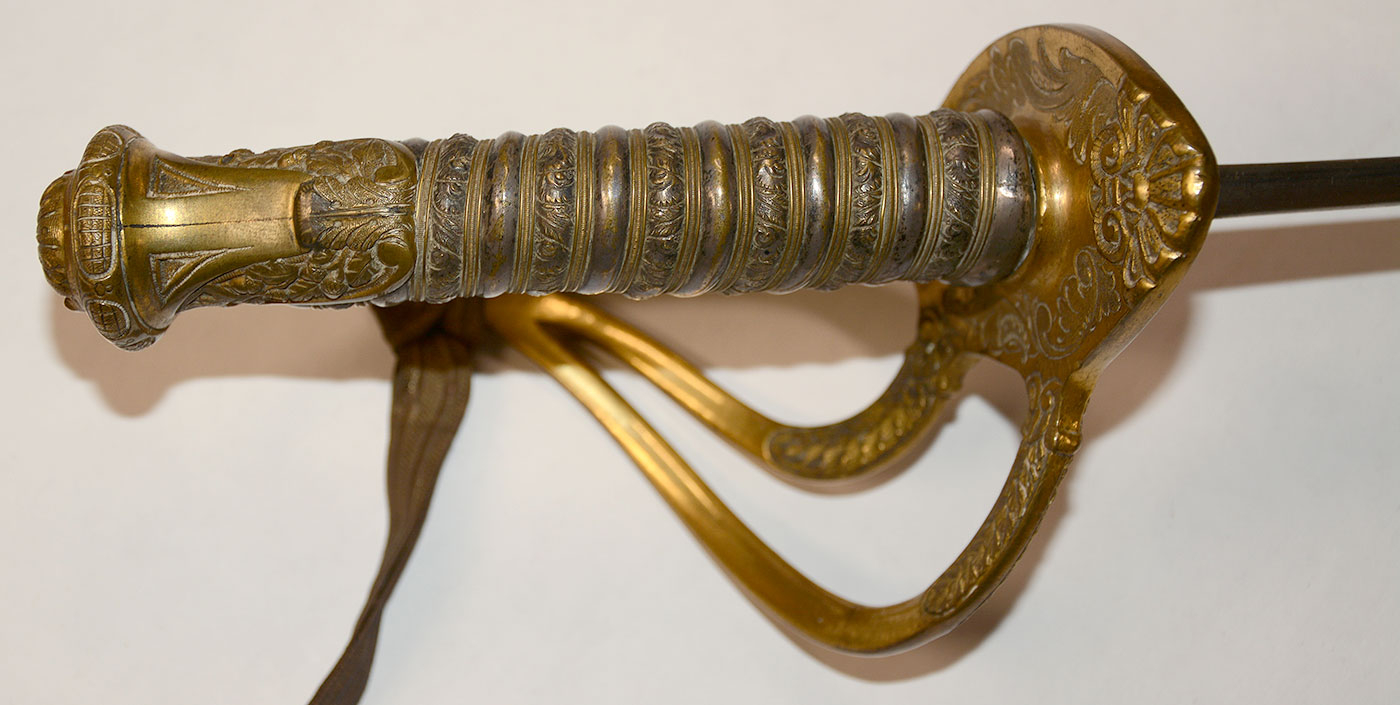
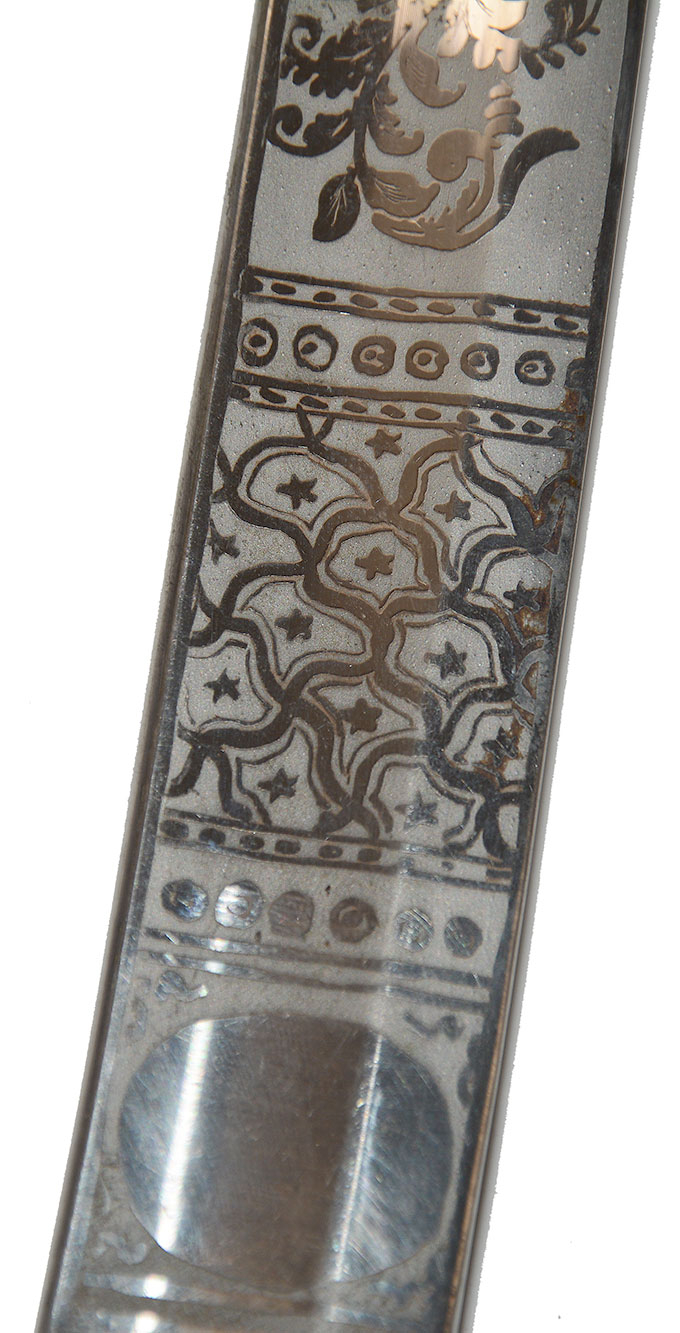



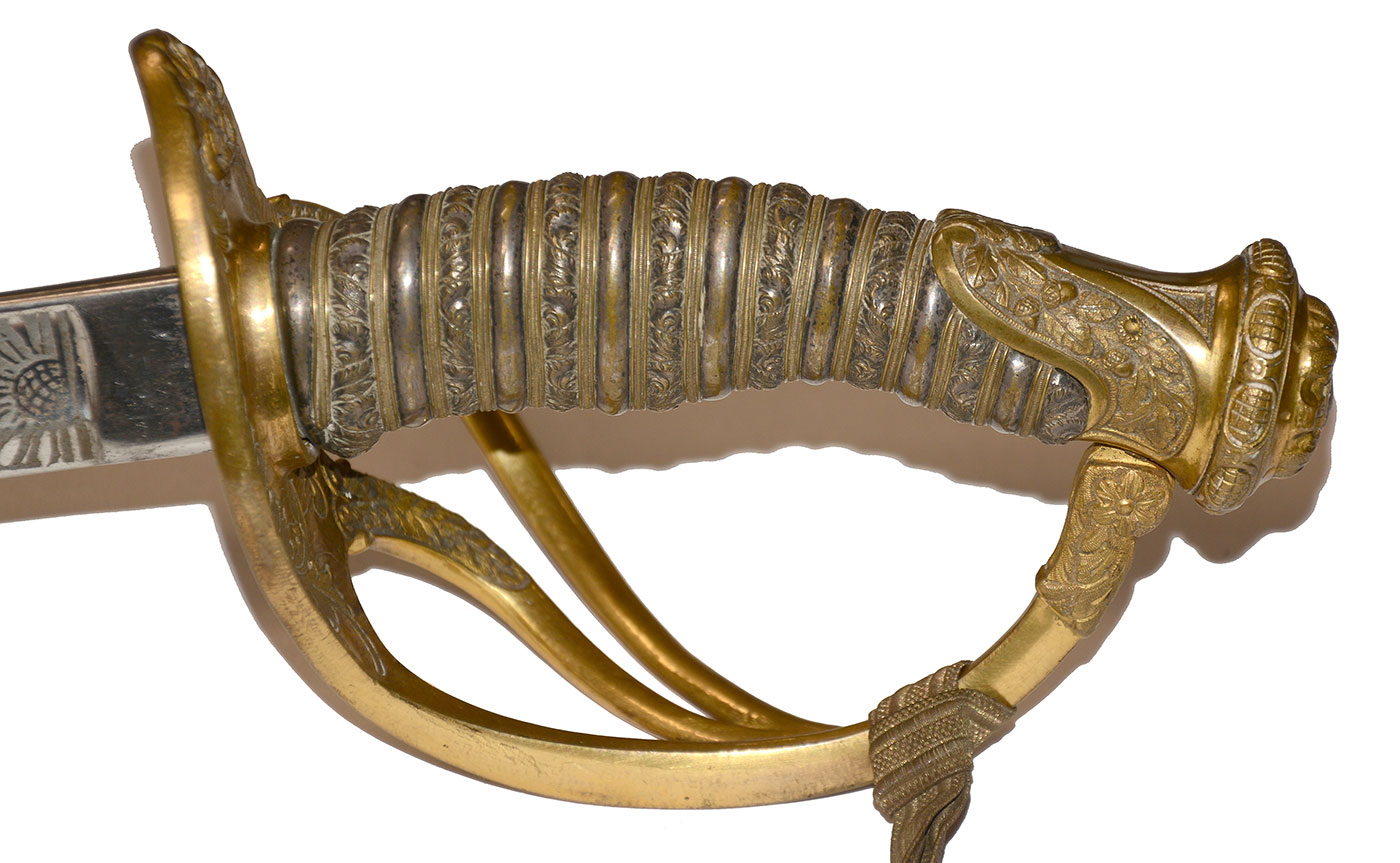
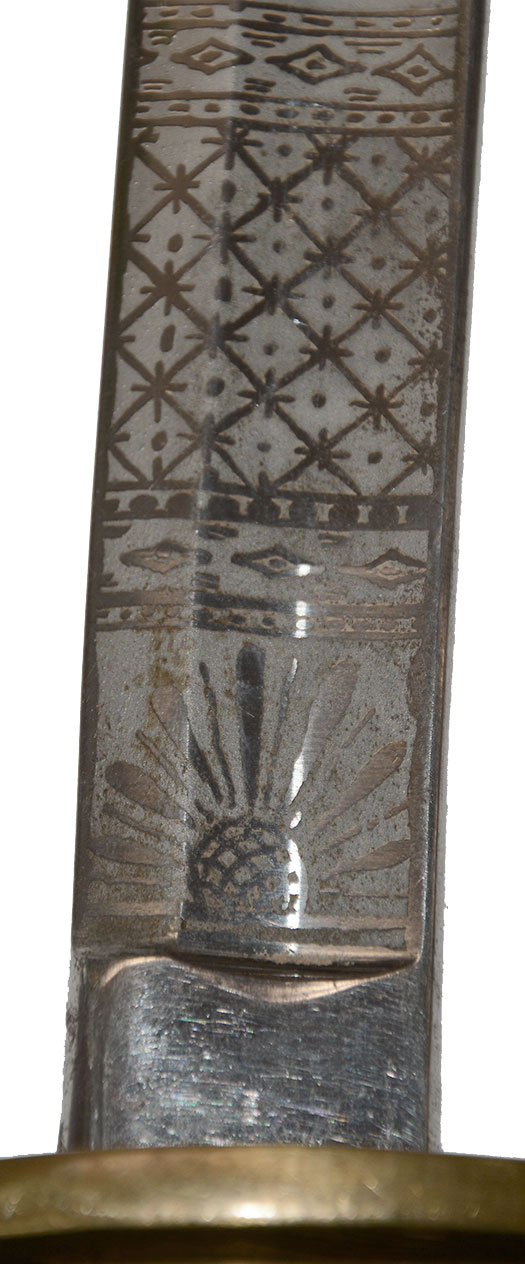




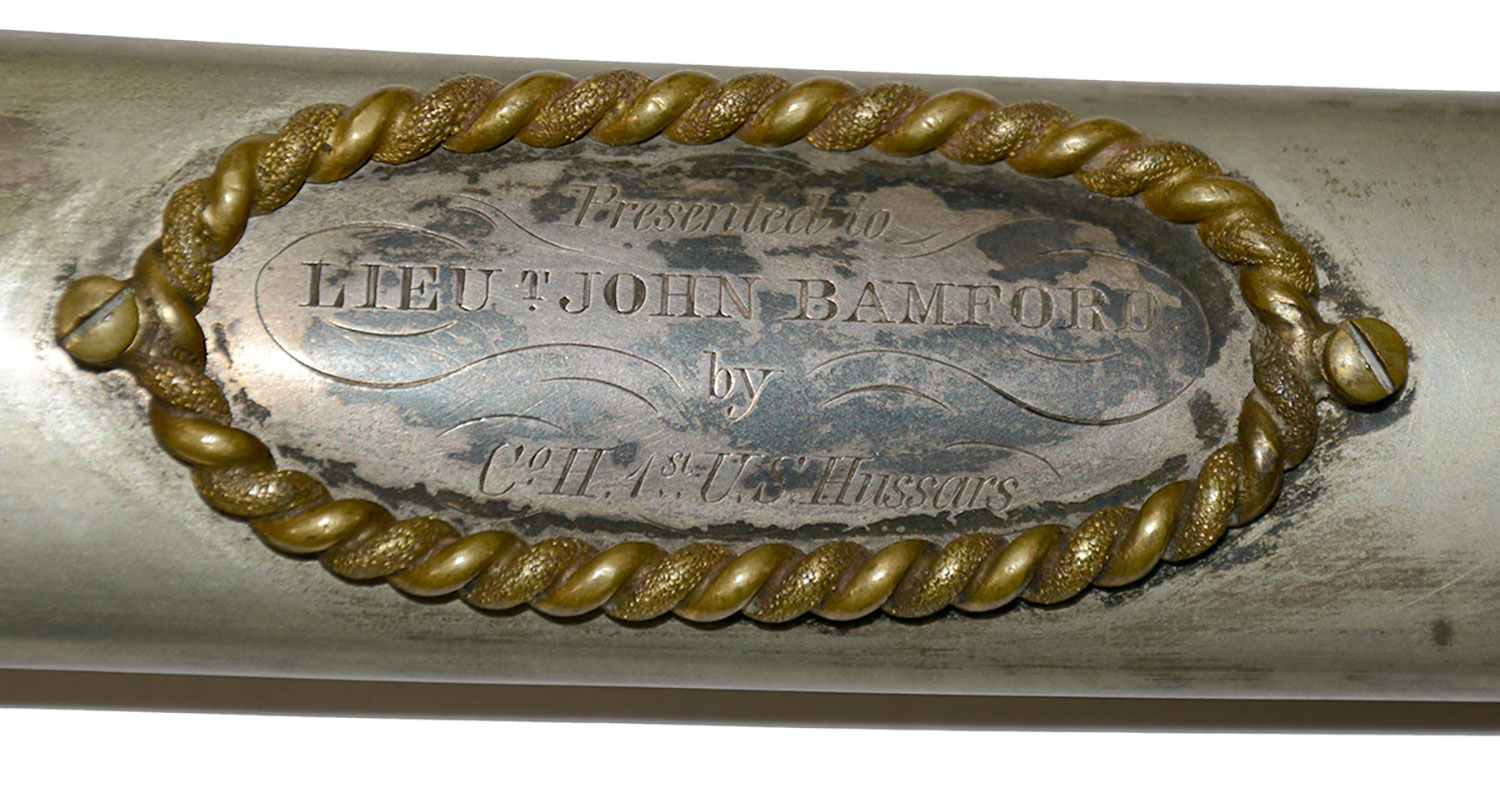


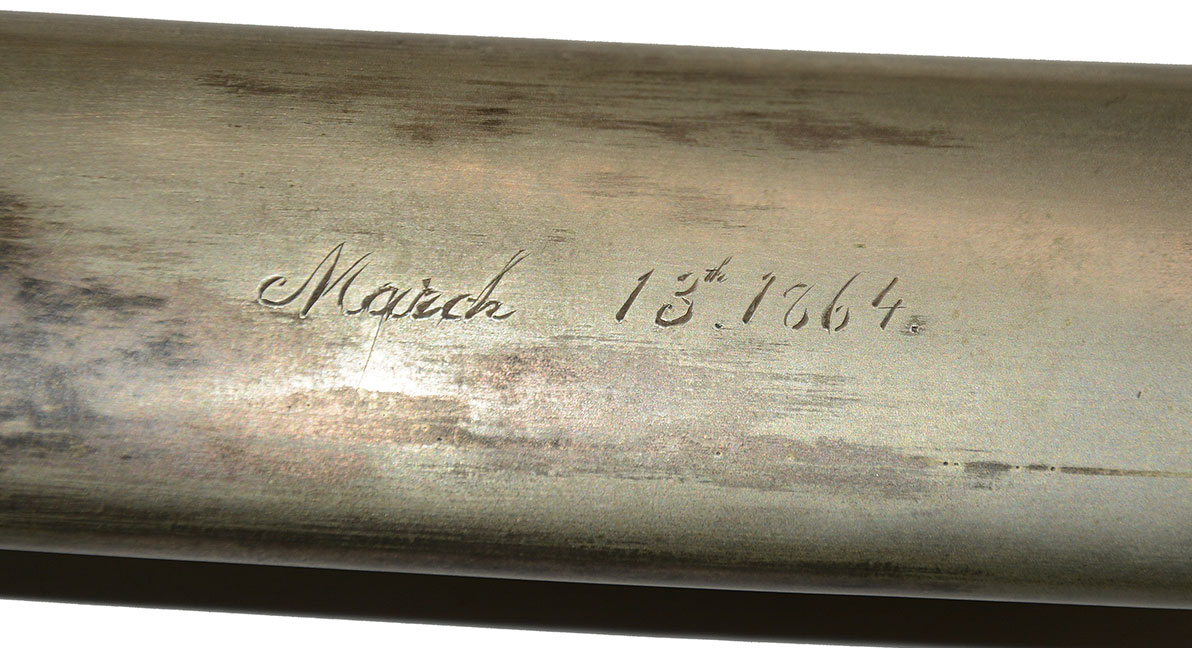

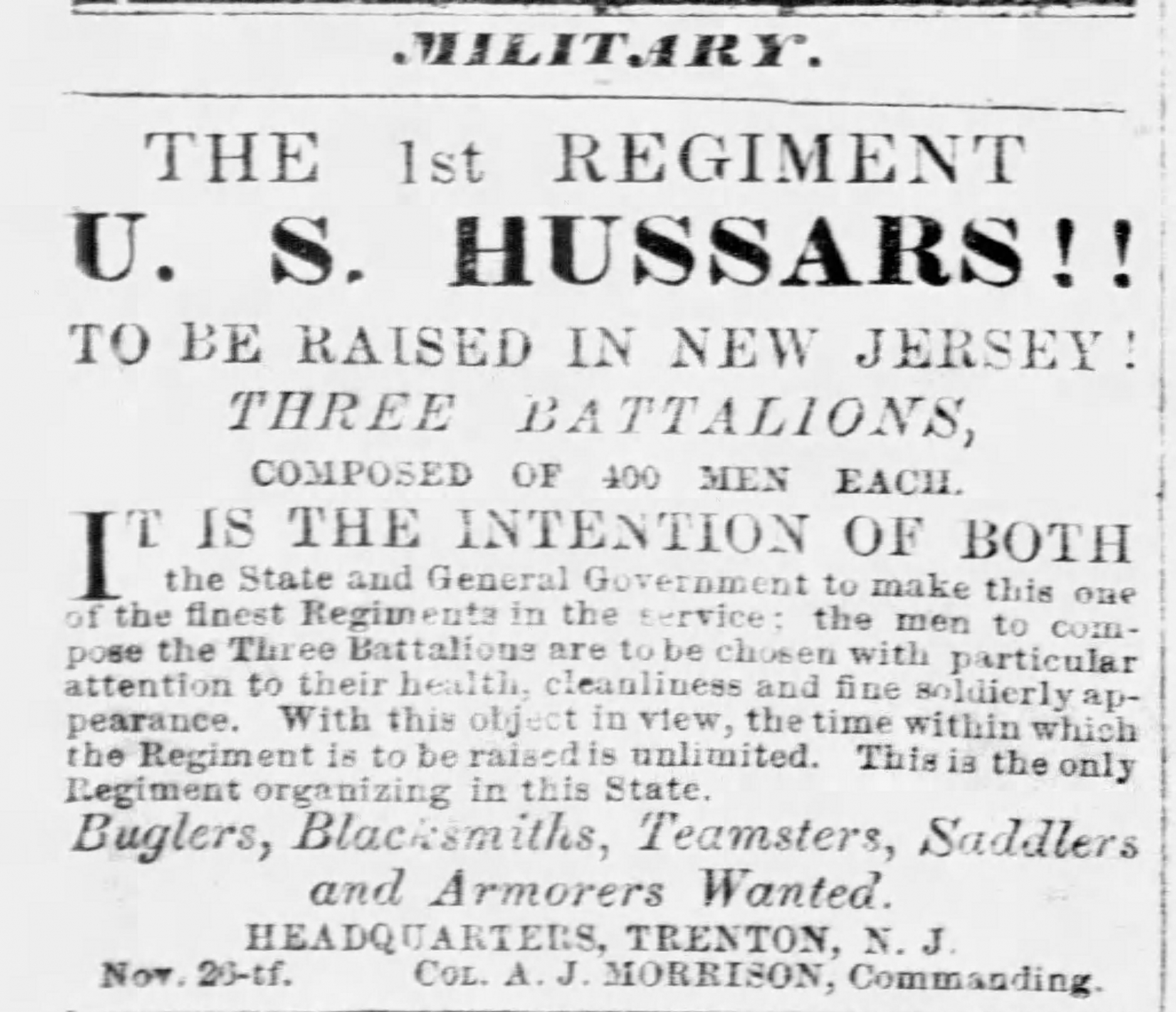
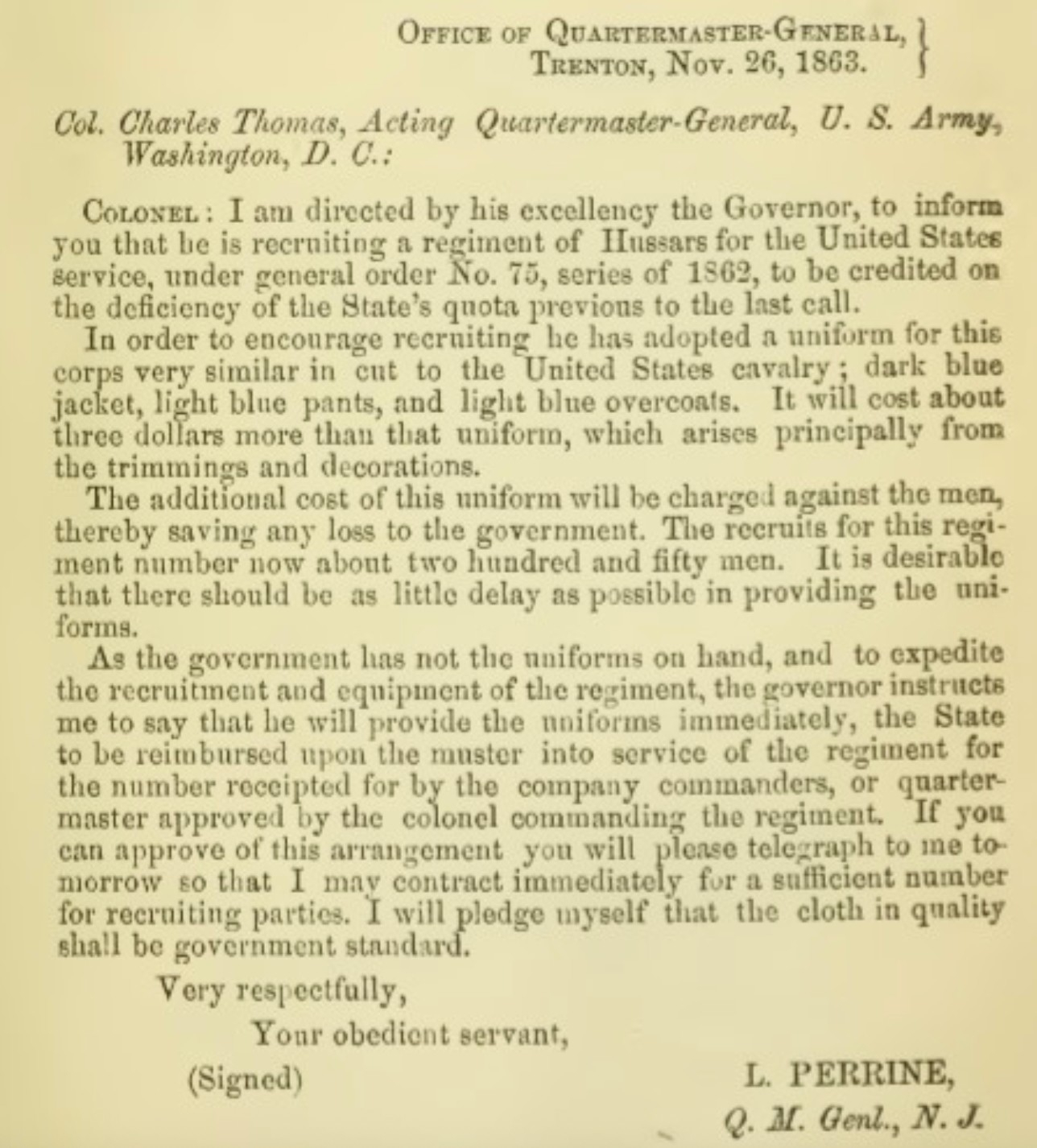
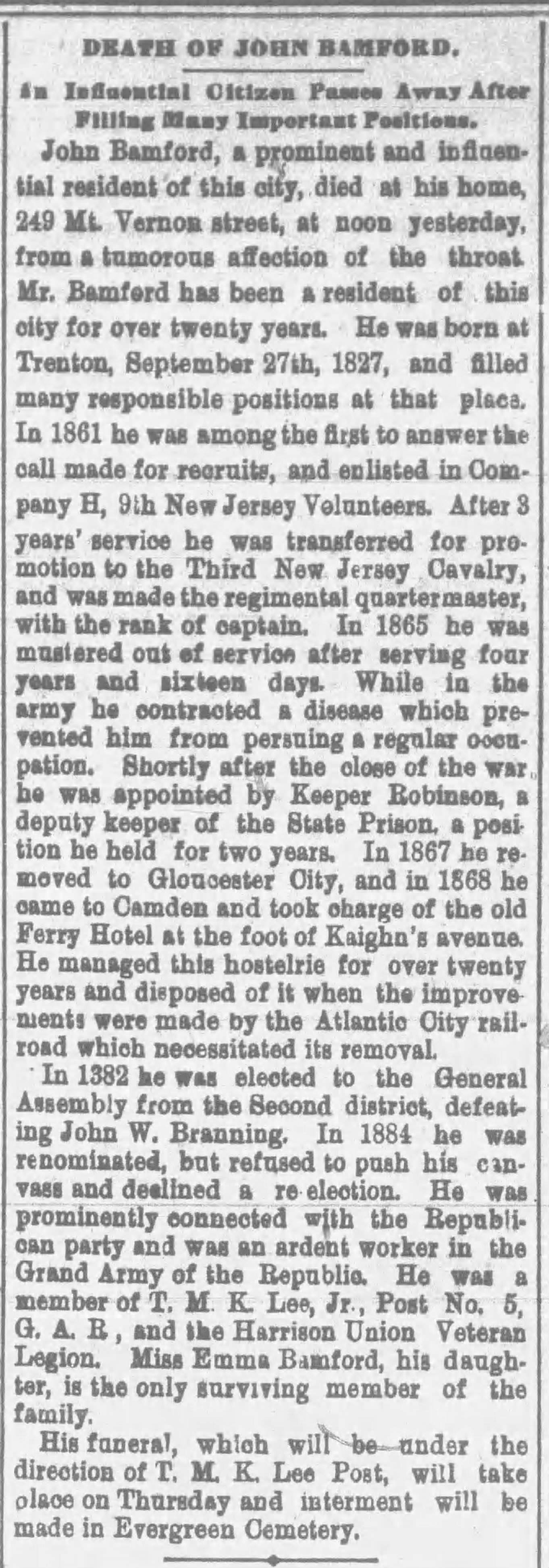
$10,950.00
Quantity Available: 1
Item Code: 2024-2368
Shipping: Determined by Method & Location of buyer
To Order:
Call 717-334-0347,
Fax 717-334-5016, or E-mail
This wonderful Union cavalry officer’s saber was presented by members of Co. H, 1st US Hussars to their 2nd Lieutenant, John H. Bamford on March 3, 1864, a few weeks before the regiment headed for the front, leaving Camp Bayard, near Trenton, NJ, on March 29. The sword remains in great condition, the exterior showing just appropriate age and wear on the scabbard and scabbard mounts, but with some gilt finish on the hilt, strong remnants of silver and gold wash on the grip and a blade that qualifies as close to factory new for condition with vivid etching. Bamford served as a line officer in the regiment during its most active campaigning, from Spring 1864 to November, including service in the Shenandoah, where it fought in Custer’s Third Division, and then as Regimental Quartermaster until discharge in August 1865. Two of his letters have been published online. We expect others are out there.
The regiment had organized starting in November 1863 and was mustered into US service on Feb. 10, 1864, as part of New Jersey’s troop quota, initially called the 1st U.S. Hussars, and then taking on its state designation as the 3rd New Jersey Cavalry. As an incentive to enlistment and in keeping with its hussar title, it was uniformed in dark blue hussar-style jackets sporting orange facings on the collar, three rows of buttons down the front, enhanced by loads of looping yellow braid, along with visorless forage caps (like a floppy pillbox style hat,) sky blue, orange-lined hooded cloaks for foul-weather wear, etc. There had been some talk of arming them only with sabers in the tradition of light cavalry, but they took the field with sabers, revolvers, and carbines, adding a good deal of sting to their colorful appearance that at first earned them the nickname of the “butterflies.” They had extensive combat service in the eastern theatre, first attached to Burnside’s 9th Corps and then joining the 1st Brigade, 3rd Division of the Cavalry Corps of the Army of the Potomac, which also saw action under Sheridan in the Army of the Shenandoah in Fall 1864, serving in Custer’s Cavalry Division. By the end of the war they had suffered the loss of 3 officers and 47 enlisted men just in killed or mortally wounded- and perhaps five times as many wounded who survived, at least to be discharged. A short history of the regiment in The Union Army in the NJ records gives their losses into July 1864 as 76; at Winchester, 130; 75 at Summit Point; 30 at Kearneysville; with further losses at Berryville, Opequan, Front Royal, Waynesboro, and other locations.
The sword shows some impressive workmanship. The pommel is cast and chased with abstract and foliate motifs on the dome and brim, with the lower border carrying a band of oak leaves and acorns, the foliate sections reflected in alternating plain and foliate ribs on the silvered grip that has a gilt false double wire binding in the grooves. Both the ridges of grip and the false wire show good color. The knuckle bow has a prominent rosette and fanlike leaves at the join with the pommel and the guard branches have leafy vines cast and chased on the outside and inside near the counterguard, which has engraved foliate scrolls around the inside with a raised cast and chased palmette on the quillon. A gold braid officer’s sword knot is still attached to the pommel. The underside of the guard has remnants of the red blade pad. The pommel face shows a little wear to the gilt, exposing the casting seam.
Both sides or the blade are etched in the fuller. The obverse has blank circle at the base for a retailer’s address with a short, dense, foliate panel above which a panoply of arms extends, featuring an oval shield at bottom, trailing a short, leafy vine, with a pair flags showing stars in the cantons and mounted on pikes with flag cords jutting out above, along with two plain pikes and tall halberd at center. Above this a U.S. eagle with arrows, olive branch, a U.S. shield on its chest has its wings stretched out up and down the blade and flourishes an E Pluribus Unum ribbon scroll from its mouth. Above this a leafy, curving vine entwiinga a ribbon scroll reading “LIBERTY, VIRTUE & INDEPENDENCE” at its base, extends up to the shaded flame or leaflike end of the frosting. The reverse uses a sunburst/palmette at bottom with latticework above (with ties at the intersections and dot in the open spaces,) followed by two long sections of scrolling foliate vines that frame a large “US” in Old English at center.
The steel scabbard shows largely as a muted silver with darker areas from handling and wear to the finish on the lower half on both sides, mainly below the lower ring mount. The throat and drag show as bright, with the ring mounts showing more stains and dark spots, but still good detail to the casting. The throat is decorated with incised foliate C-scrolls on front and back that are elaborated upon by the ring mounts that are heavily cast and chased on the obverse with curling vines with leaves and berries, the carrying rings themselves rendered in the form of twisted rope or cable. The foliate motifs are then repeated in incised, scrolling foliate sprays on both sides of the boot-shape drag and drag blade.
The rope or cable-shaped carrying rings are mirrored in the applied gilt brass oval border of the presentation inscription engraved on obverse between the ring mounts: “Presented to / LIEUT. JOHN BAMFORD / by/ Co. H. 1st U.S. Hussars.” This is supplemented on the reverse side by the date of the presentation: “March 13th. 1864.” Bamford had managerial experience and apparently organizational talent, and likely something of a commanding presence. He was at various points a hotel keeper, before and after the war, served a term in the state assembly, but also spent some time as a deputy State Prison keeper. Perhaps most importantly, he had prior military service, mustering in as regimental Quartermaster Sergeant in the 9th New Jersey Infantry on Oct. 8, 1861. During his time with that regiment they saw action as part of Burnside’s Coastal Expedition, fighting at Roanoke Island in February 1862 and taking part in several skirmishes, raids, and expeditions in the state- Tarboro, New Bern, Goldsboro, etc., with a brief posting to South Carolina in early 1863 and then a return to North Carolina, with participation in the relief of Little Washington, etc. He served with them until discharged for promotion to 2nd Lieutenant of Co. H in the cavalry regiment on Dec. 19, 1863. He was promoted to 1st Lieutenant of the company on July 21, 1864, and late in the year took over the Quartermaster post as of November 1, 1864, a post he held until mustered out August 1, 1865.
During his time as line (company) officer, the regiment’s service is summarized in Dyer’s Compendium as follows:
“March to Annapolis, Md., April 5–7, 1864. Guard Orange & Alexandria Railroad April 29-May 5. [At this point the regiment was part of the cavalry brigade assigned to the 9th Corps, Burniside’s command, which had returned from its western adventures and was officially operating under Grant, but independently of the Army of the Potomac since Burnside technically outranked Meade- this arrangement was dropped in May 1864.] Campaign from the Rapidan to the James May 3-June 12, 1864. Wilderness May 5–7. Near Germanna Ford May 5. Picket on the Rapidan May 6. Guard pontoons May 7. Expedition to Fredericksburg May 8–9. Spotsylvania May 9–12. Spotsylvania Court House May 12–21. United States Ford May 19. North Anna River May 23–26. On line of the Pamunkey May 26–28. Totopotomoy May 28–31. Mechump's Creek May 31. Ashland Station June 1. Cold Harbor June 1–12. Totopotomoy, Gaines' Mill, Salem Church and Haw's Shop June 2. Haw's Shop June 3. Bethesda Church June 11. White Oak Swamp June 13. Smith's Store, near St. Mary's Church, June 15. Weldon Railroad June 20. Jerusalem Plank Road June 22–23. Milford Station June 27. Picket duty at City Point until July 16. Duty at Light House Point July 16–25. Before Petersburg July 25. Mine Explosion, Petersburg, July 30 (Companies A and E). Sheridan's Shenandoah Valley Campaign August 7-November 28. Winchester August 17. Summit Point August 21. Middleway August 21. Near Kearneysville August 25. Abraham's Creek, near Winchester, September 13. Battle of Winchester September 19. Near Cedarville September 20. Front Royal September 21. Milford September 22. Waynesboro September 29. Bridgewater October 2. Tom's Brook ("Woodstock Races") October 8–9. Picket at Cedar Creek until October 13. Cedar Creek October 13. Battle of Cedar Creek October 19.”
The date of Bamford’s appointment as Quartermaster is given as November 1, but he may not have officially taken over the post until November 20- the date of his official transfer to the regiment’s field and staff. In any case, the regiment did continue to see action, and he perhaps found himself in some hairy situations even as quartermaster. Dyer summarizes that part of their service as follows: “Newtown (or Middletown) November 12. Rude's Hill, near Mr. Jackson, November 22. Expedition from Kernstown to Lacey's Springs December 19–22. Lacey's Springs December 21. Sheridan's Raid from Winchester February 27-March 24, 1865. Occupation of Staunton March 2. Action at Waynesboro March 2. Occupation of Charlottesville March 3. Near Ashland March 15. Appomattox Campaign March 28-April 9. Dinwiddie Court House March 30–31. Five Forks April 1. Fall of Petersburg April 2. Namozine Church April 3. Sailor's Creek April 6. Appomattox Station April 8. Appomattox Court House April 9. Surrender of Lee and his army. Expedition to Danville and South Boston April 23–27. March to Washington. D.C., May. Grand Review of the May 23.”
Bamford returned to his hotel business after the war and was a member of the Thomas M.K. Lee Post #5 G.A.R. In 1883 he was elected to the state legislature. He passed away in 1890 and was interred at Camden.
This is an impressive cavalry officer’s saber from one of the more colorful cavalry units of the war. For those wishing to see one of their uniforms, the Time-Life volume Arms and Equipment of the Union shows one on page 109. [sr] [ph:L]
~~~~~~~~~~~~~~~~~~~~~~~~~~~~~~~~~~~
THIS ITEM, AS WITH ALL OTHER ITEMS AVAILABLE ON OUR WEB SITE,
MAY BE PURCHASED THROUGH OUR LAYAWAY PROGRAM.
CLICK HERE FOR OUR POLICIES AND TERMS.
THANK YOU!
Inquire About IMPRESSIVE 3rd NEW JERSEY - 1st U.S. HUSSARS - PRESENTATION CAVALRY OFFICER’S SWORD WITH SWORD KNOT, DEEPLY CAST AND CHASED HILT AND MOUNTS AND IMMACULATE BLADE ETCHING
Most Popular
Historical Firearms Stolen From The National Civil War Museum In Harrisburg, Pa »
Theft From Gravesite Of Gen. John Reynolds »
Selection Of Unframed Prints By Don Troiani »
Fine Condition Brass Infantry Bugle Insignia »
Large English Bowie Knife With Sheath 1870’S – 1880’S »
Imported (Clauberg) Us Model 1860 Light Cavalry Officer's Saber »
featured item
DECEMBER 1862 LETTER WRITTEN BY COL. JOSHUA LAWRENCE CHAMBERLAIN TO HIS WIFE FANNY
Here we have a letter written by a man who needs no introduction, Joshua Lawrence Chamberlain. This four-page letter is written on standard 8.5 inch by 11 inch unlined paper. In period ink, Chamberlain writes to his wife, Fanny, from the camp of the… (557-250B). Learn More »


